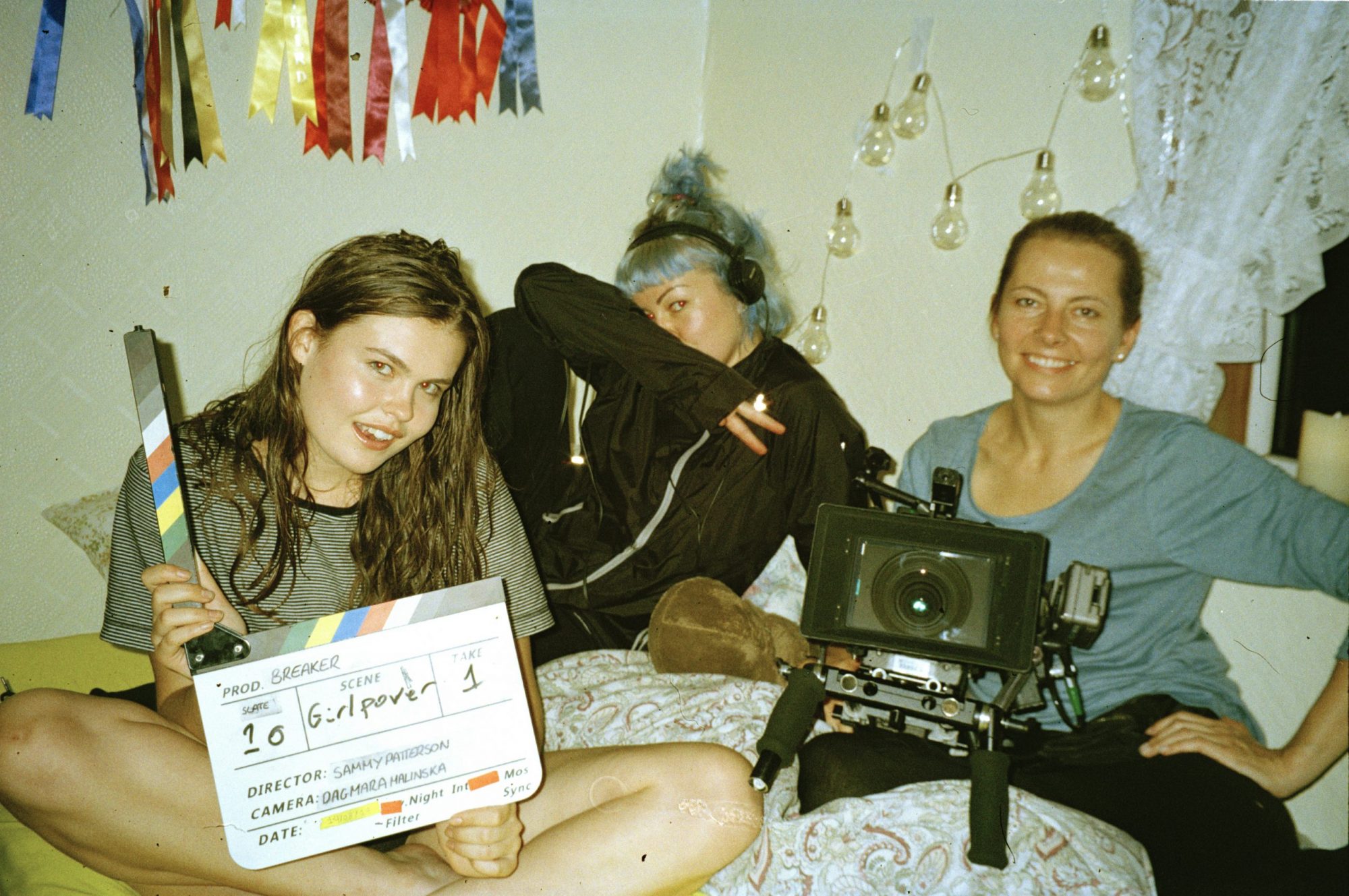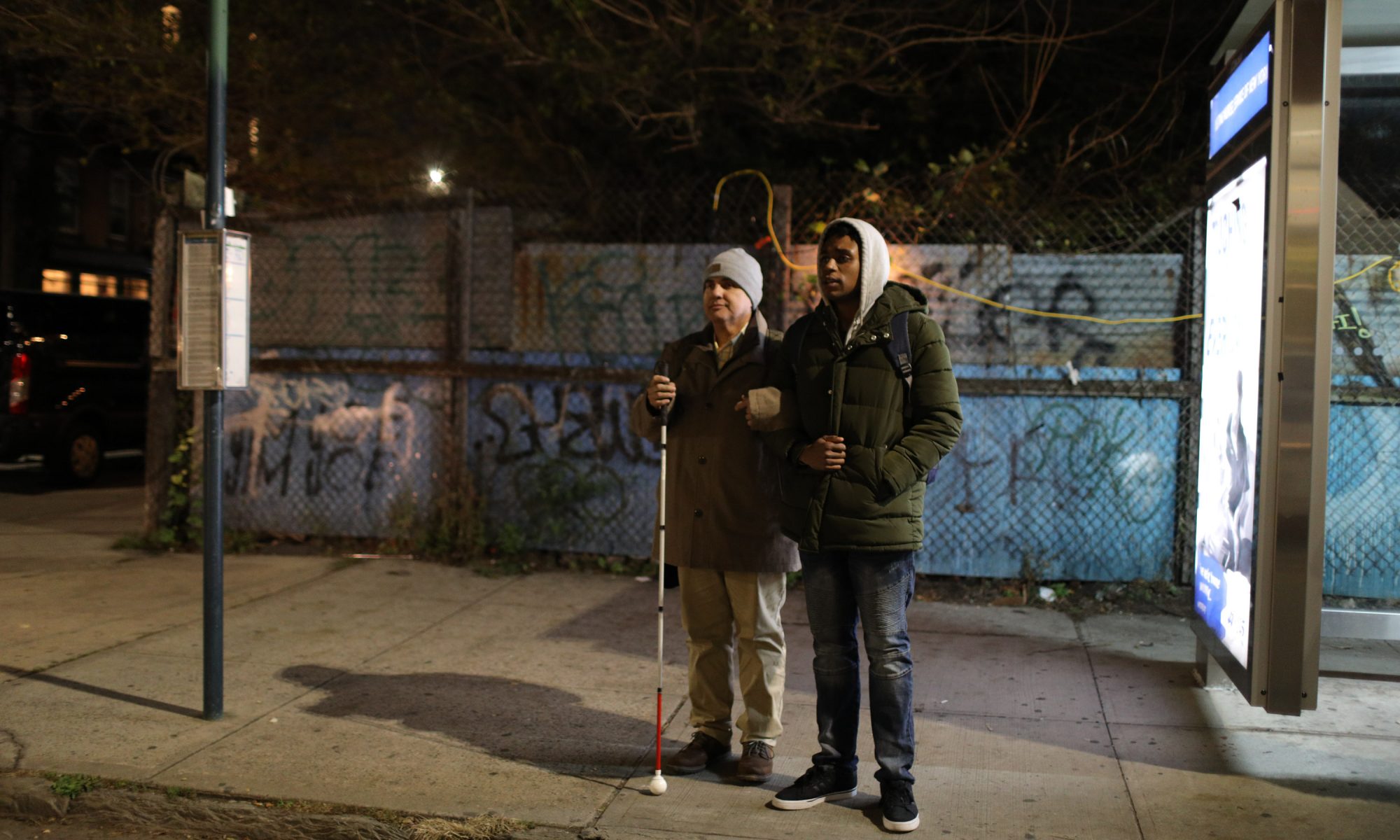Being There: Voices of Ability
By Michelle Miller, Editor in Chief
Watch Feeling Through, The Not-Dying Girl and Under the Lights here. Watch a Q&A with the Director, Screenwriter and Producer of Feeling Through Doug Roland with Michelle Miller here.

“It is only in the heart where one can see rightly; what is essential is invisible to the eye.” Antoine de Saint-Exupéry
The collection of films under Voices of Ability is a balm for hearts and psyches battered by a relentless culture of cruelty. We are invited to take refuge in an unlikely friendship, formed as two souls bond while waiting for a New York City bus in Feeling Through. The Not-Dying Girl is a documentary in which a young athlete, Lauren McCullough, fights like Hell to squeeze every ounce of joy out of life to fill her bucket list to the brim in the wake of her cancer’s return. Under the Lights captures a teenage boy with epilepsy, played with humor and pathos by Pearce Joza, who willingly risks his life for one dance at his senior prom, in search of that ever-elusive feeling of being “normal.”
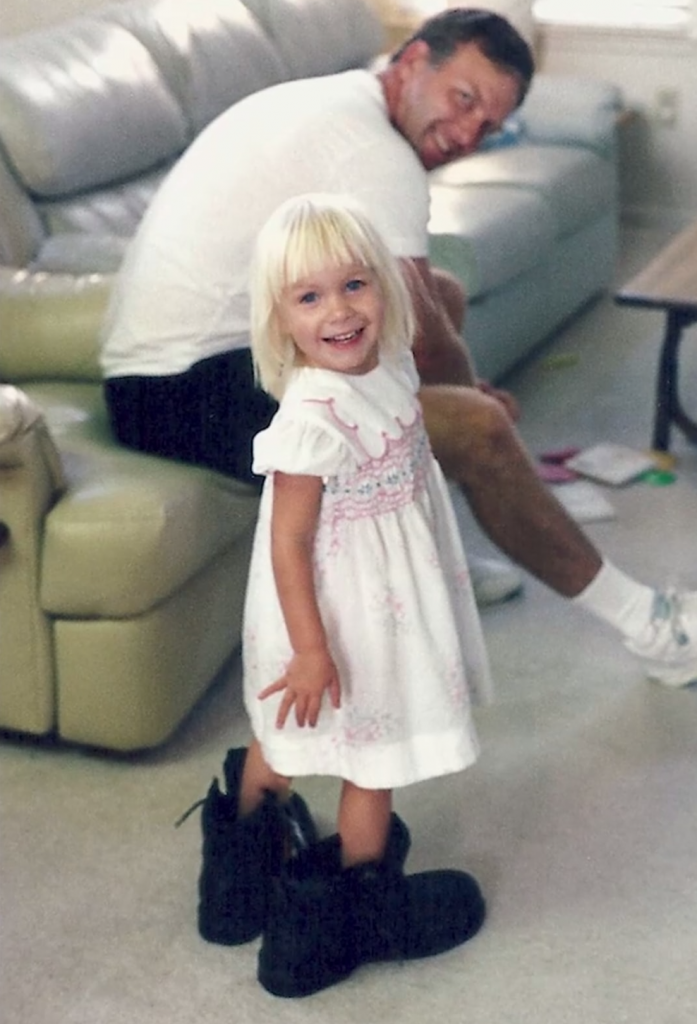
“Normal” is an insidious word. Who determines the parameters for what Webster’s defines as “acceptable, typical, a standard for the usual?” A narrow definition that excludes, alienates, and disempowers. There is nothing “normal” about these stories or the thoughtful storytellers who capture them with respect, dignity, and tenderness. They are each extraordinary testaments to kindness, courage, and resilience. They are also deeply human.
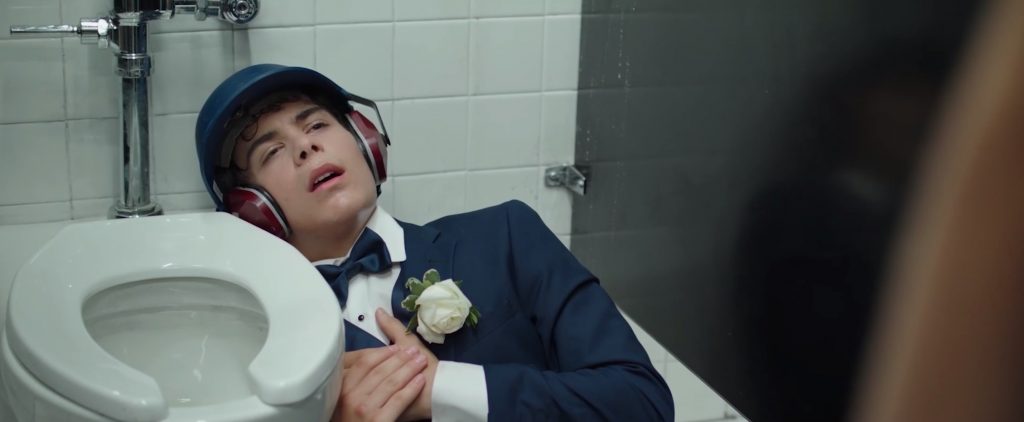
The trope of the non-complaining, stoic, “good” patient is tired and utterly void of empathy. Illness does not earn the afflicted sainthood. The fight to live can be waged with rage as well as grace. Disability does not dampen desire or the simple need for human touch that can be given in a spontaneous moment of passion, instead of practiced aid. Able bodies may move more freely, but their capacity to love is no more agile or vast than those with physical limitations. People who suffer would rather live full, unencumbered, pain-free lives than be propped up publicly as inspiration. Courage is often summoned because the alternative would be too bleak. Each of these films allows their protagonists to have the full gamut of human feelings. Our culture of rampant toxic positivity and “good vibes only” relegates feelings like anger, longing, and despair to the margins. In these three films such feelings are not only allowed but also explored as integral to growth and acceptance. Each film is inspiring but Feeling Through stands apart in its depth of action and economy of words.
I had the privilege of speaking with the director/screenwriter/producer, Doug Roland, about the inspiration and execution of Feeling Through.
Doug Roland is a lifelong New Yorker. For the uninitiated the hustle and cacophony of New York City is brash, lonely, and intimidating. In truth, it can be all of those things and yet, like people huddling together for warmth against the howling winds of a New York City winter, something about the city in the quiet hours in transit forges immediate connections. They may only span the length of the uptown express train to Harlem, but their impact is indelible. Feeling Through was born out of one such encounter.
Years ago, while standing at a bus stop, Doug was approached by a man with a sign stating that he was blind and deaf and needed help. Doug obliged, and by the end of their exchange, the man named Artemio, had wrapped Doug in a grateful embrace. The memory remained for years scribbled in a notebook until it was ready to be manifested into the beautiful and moving twenty minutes of thoughtful discovery and artful storytelling that encapsulate Feeling Through.
Doug’s personal experience morphed into the character of Tereek, who is sensitively portrayed by Steven Prescod. The choice to change the character from one inspired by Doug’s experience, who is white and was living comfortably at the time of his Harlem bus encounter with Artemio—renamed “Artie” for the film—to a young Black man in financial dire straights, added another layer to the story.
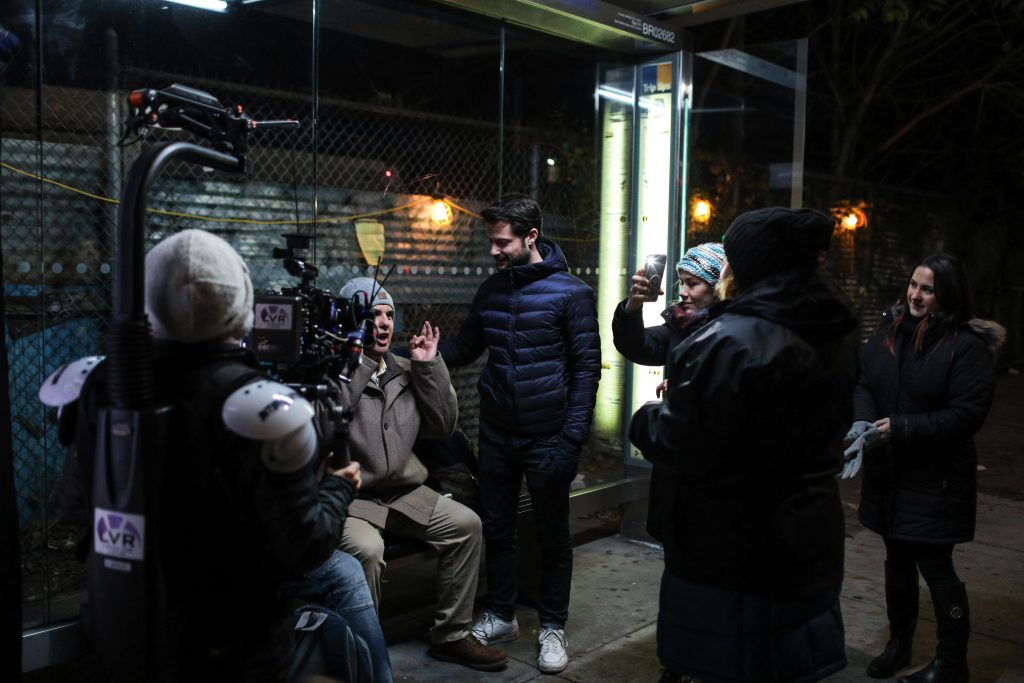
Tereek’s personal plight is illustrated from the outset. New Yorkers bracing against the cold, rush past his polite request for a subway card “swipe”—the equivalence of $2.75—in a haze of indifference and condensed breath. He is stranded. We later see him joking with his friends, texting a girl in an effort to have a place to crash under the guise of a hookup. He clearly has nowhere to go, but even his friends are blind to his hunger and need. Tereek has a small window of opportunity to find refuge when he encounters Artie. Artie holds a sign asking for help to get the M15 bus. Tereek offers Artie his arm. Artie gently shifts the grip. In that moment, Artie is Tereek’s teacher. Whether it is to kill time waiting for the bus or from a sense of genuine altruism, we don’t know. What ensues between the two is a buddy film that confronts stereotypes about disability, masculinity, and race.
Artie is vulnerable and must seek help from stranger’s daily. He embodies the ultimate vulnerability of trust. He carries a notepad where he can communicate his requests. These same pages, when thumbed through by Tereek, are an inadvertent journal of Artie’s own yearnings and fears.
Tereek is vulnerable in his own way. The cold night and the critical gaze of strangers encroach on the warmth of the two strangers. Tereek is keenly attuned to feeling the eyes of strangers falling upon him only to look through him. How often are we given a glimpse of a Black youth clad in a “hoodie,” late at night on the streets of NYC that isn’t a prejudicial portrayal of them as predator? Conversely, viewers versed New York’s long practice of racial profiling with “stop and frisk” will likely feel a tinge of worry for the young man as the film unfolds. However, the dread is pushed aside as we see Tereek tenderly taking Artie’s instruction on how to best lead him and communicate by carefully tracing letters into Artie’s open palm with the tip of his finger. Tereek is clearly a wounded soul who is longing to be seen and Artie, without the benefit of two key senses used in discernment, manages to connect with the lonely boy and embrace him.
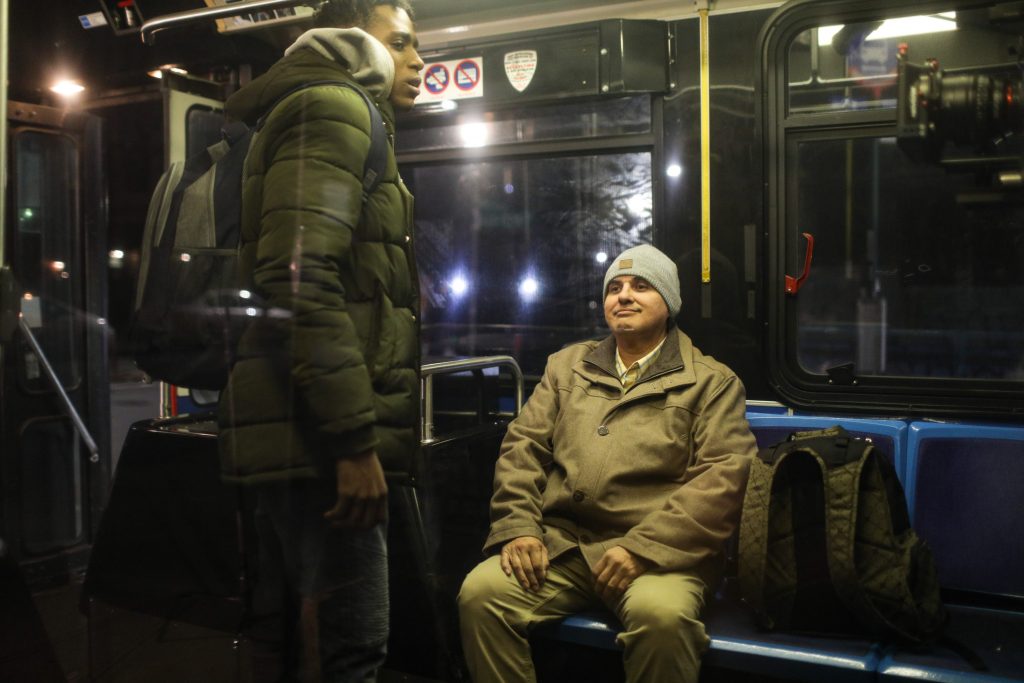
Artie is played by the innately charming, Robert Tarango, the first blind and deaf person to portray a lead character in a film. Robert, who in real-life works in the kitchen at the Helen Keller National Center, was one of those discoveries that filmmakers talk about, when a person who walks in at the last minute just has the fabled yet intangible “it” factor. Robert has an easy smile and a solid frame. Steven Prescod is lean, his energy is wiry and intense. He projects the weight of a kid who was once in the system, so when his laughter peels into the cold night with Robert’s, it is like music.
Every shot is intentional and nuanced. Not a word or a movement is out of place. The scrape of a Sharpie, the pocketing—then paying forward of—spare change, the laughter over a forgotten bottle of water are all seemingly extraneous details, but are integral to the story and its delivery. This little film contains multitudes, thanks in no small part to a very talented and cohesive team.
Doug speaks candidly to the challenges and blessings of working with a first-time actor like Robert, as well as his own limitations as a director who needed to rely on help signing throughout the shoot. It is clear that this passion project became a call to action and advocacy for Doug as he is now the Media Director for the Helen Keller National Center. In addition he hosts a web series on YouTube by the same name of the film that highlights real-life stories of the deaf/blind community. His commitment and respect for his subject shines through every moment of Feeling Through. The audience is invited to discover what might happen if we close our eyes and ears for a moment and truly see.
Watch Feeling Through, The Not-Dying Girl and Under the Lights here. Watch a Q&A with the Director, Screenwriter and Producer of Feeling Through Doug Roland with Michelle Miller here.
